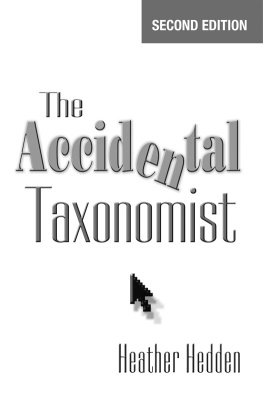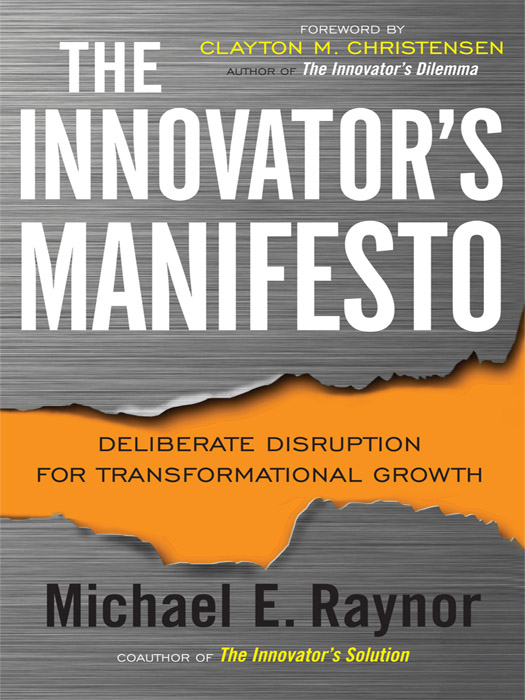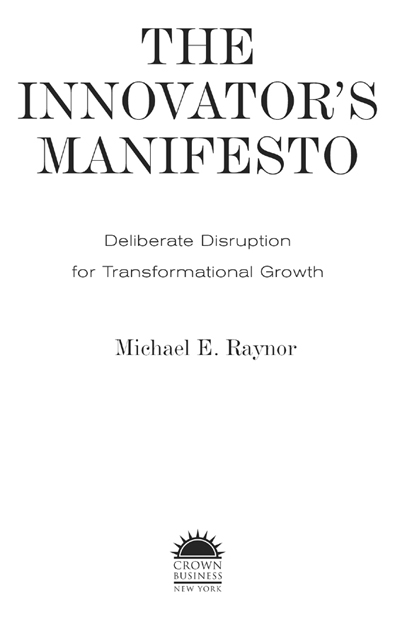Also by Michael E. Raynor
The Strategy Paradox
The Innovators Solution (coauthored with Clayton M. Christensen)
Disclaimer: This work contains general information only and is not intended to be construed as rendering accounting, business, financial investment, legal, tax, or other professional advice or services. This work is not a substitute for such professional advice or services, nor should it be used as a basis for any decision or action that may affect your business. The author and publisher disclaim any liability, loss, or risk that is incurred as a consequence of the use and application of any of the contents of this work.
Copyright 2011 by Michael E. Raynor
Foreword copyright 2011 by Clayton M. Christensen
All rights reserved.
Published in the United States by Crown Business, an imprint of the
Crown Publishing Group, a division of Random House, Inc., New York.
www.crownpublishing.com
CROWN BUSINESS is a trademark and CROWN and the Rising Sun colophon
are registered trademarks of Random House, Inc.
Library of Congress Cataloging-in-Publication Data
Raynor, Michael E.
The innovators manifesto : deliberate disruption for transformational growth /
Michael E. Raynor.1st ed.
p. cm.
1. Disruptive technologies. 2. Creative ability in business.
3. Success in business. I. Title.
HD45.R296 2011
658.4063dc22 2010052634
eISBN: 978-0-385-53167-2
Jacket design by Jean Traina
v3.1
CONTENTS
FOREWORD
FROM ART
TO SCIENCE
by Clayton M. Christensen
I n this fascinating book, Michael Raynor tells us that the world of investing to create successful businesses is about to change. Just as theories in the world of biology or physics have allowed us to predictably create desired outcomes in medicine or engineering, Raynor shows here that Disruption promises much greater predictability in the realm of creating successful new businesses. Raynor shows us that there are certain technologies and strategies that succeed much more often than others. He shows us what they are, why they work, and how to apply them. Scienceat least in this one instancetruly is making a difference in the practice of management.
The ultimate significance of The Innovators Manifesto will be revealed only over time. I, however, have high hopes for its longevity and impact because Raynors work falls very neatly into a well-established pattern for the transformation of tacit, intuitive knowledgeart, if you willinto codified, well-understood, explicit rulesin other words, science. I believe that Raynor is playing a central role in transforming the management of innovation from an art to a science. This will truly be a landmark work.
To see the significance of this contribution, consider that in the early stages of any field, our collective knowledge is little more than an assortment of observations collected over many generations. There are many unknowns, and so the work is complex and intuitive, and the outcomes are relatively unpredictable. Only skilled experts are able to cobble together adequate solutions, and their work proceeds through intuitive trial-and-error experimentation. This type of problem-solving process can be costly and time-consuming, but there is little alternative when our knowledge is still in its infancy.
Creating new, successful innovations still looks very much like this today. Investment decisions and strategic choices are typically based on intuition; learning, if it happens at all, is a very expensive by-product of trial and error. Entrepreneurs and new venture investors alike live a perpetual contradiction, convinced on a case-by-case basis that the venture they have just launched will succeed, even as they cannot escape the fact that 90 percent of all new venturesincluding theirsultimately fail. In such a world, we can make no clear connection among the attributes of the new business, the oversight provided by the investors, the management methods of the leadership team, and final outcomes. That makes it very hard to learn how to succeed at innovation.
In the face of this uncertainty, some widely accepted rules of thumb have emerged. For example, a mantra for most venture capitalists is that it is folly to make investment decisions based upon the start-ups technology or strategy. The VCs have concluded from their trials and errors that even theythe best in the worldcannot predict in advance whether the technology or strategy described in a start-ups business plan will actually work. As a result, they typically assessintuitivelywhether the management team has the intuition to succeed. If members of the team are experienced and perceptive, the VCs reason, they can develop the right technology and the right strategybecause they and only they will have the instinct to change direction when needed. As far as affecting outcomes in a meaningful and predictable way, however, this approach ranks up there with feed a cold, starve a fever. It is little more than an aphorism based on selective memory, the force of repetition, and the hope that at least it does no harm.
Getting beyond myth requires that we first carefully document patterns that repeat over time. This does not provide any guarantee of success, but it does provide at least some confidence that there is a correlation among factors of interest. Ultimately these patterns of correlation are supplemented with an understanding of causality, which makes the results of given actions much more predictable. Work that was once intuitive and complex becomes routine, and specific rules are eventually developed to handle the steps in the process. Abilities that previously resided in the intuition of a select group of experts ultimately become so explicitly teachable that rules-based work can be performed by people with much less experience and training.
To illustrate, consider the evolution of medical science. At its core, the problem in medicine historically is that the human body has a very limited vocabulary from which it can draw when it needs to declare the presence of disease. Fever, for example, is one of the words through which the body declares that something inside isnt quite right. The fever isnt the disease, of course. It is a symptomatic manifestation of a variety of possible underlying diseases, which could range from an ear infection to Hodgkins lymphoma. Medications that ameliorate the fever dont cure the disease. And a therapy that addresses one of the diseases that has fever as a symptom (as ampicillin can cure an ear infection) may not adequately cure many of the other diseases that also happen to declare their presences with a fever.
As scientists work to decipher the bodys limited vocabulary, they are teaching us that many of the things we thought were diseases actually are not. Theyre symptoms. For example, we have learned that hypertension is like a feverit is a symptomatic expression of a number of distinctly different diseases. There are many more diseases than the number of physical symptoms that are available, so the diseases end up having to share symptoms. One reason why a therapy that effectively reduces the blood pressure of one patient is ineffective in another may be that they have different diseases that share the same symptom. When we cannot properly diagnose the underlying disease, effective care generally can be provided only through the intuition and experience of highly trained (and expensive) caregiversmedicines equivalent of Warren Buffett.







